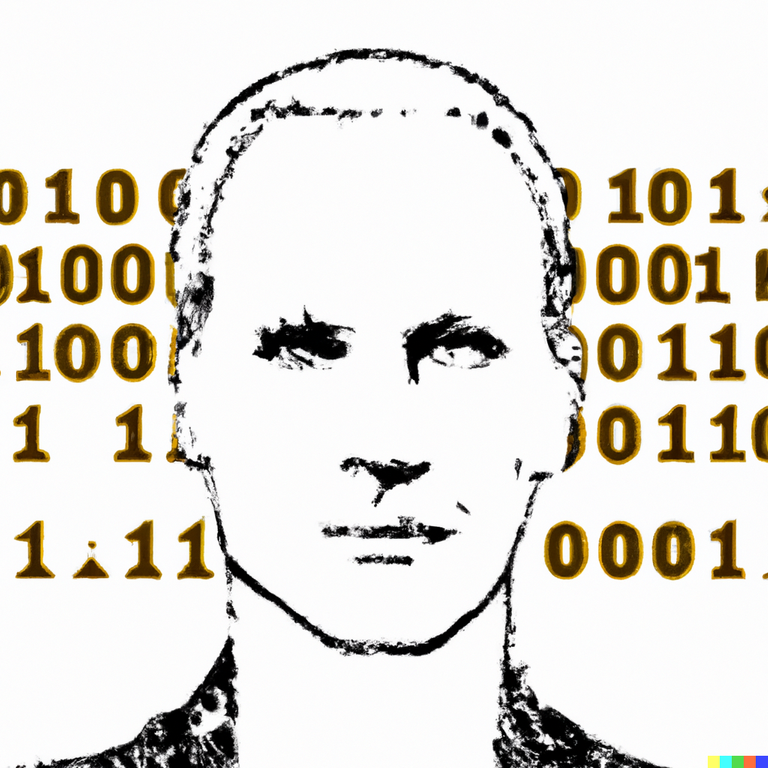
Welcome to my blog about face recognition with OpenCV and the Viola-Jones algorithm!
In this blog I will explain the concept of face recognition and present a sample project I created for my shop. I will also use Python code to explain the basics of the Viola-Jones algorithm.
Facial recognition is a technology that allows computers to identify people by their faces. It is a very useful tool for security applications, but also for other things like marketing and customer service. In my case, I want to use it to be able to greet customers by name in my shop.
The Viola-Jones algorithm is one of the most widely used algorithms in computer vision and is often used for use cases such as face recognition. The algorithm uses features of images (for example, edge features or colour differences) to determine whether or not they are part of a particular object. If so, it can be identified as part of the object (in our case, part of a face).
To implement the Viola-Jones algorithm in Python, you need the OpenCV library set (Computer Vision Library). This package contains functions and classifiers for various types of computer vision tasks - including recognising faces with the Viola-Jones algorithm. After you have installed OpenCV, you can start writing the code to implement the Viola-Jones algorithm:
# Import the necessary packages
import cv2
# Load the cascade classifier file for face detection
face_cascade = cv2.CascadeClassifier('haarcascade_frontalface_default.xml')
# Read the input image
img = cv2.imread('inputImageName')
# Convert to grayscale
gray = cv2.cvtColor(img ,cv2 .COLOR_BGR2GRAY)
# Detect faces using the cascade classifier object created earlier
faces = face_cascade .detectMultiScale(gray ,1 .3 ,5 )
# Draw rectangles around detected faces
for (x ,y ,w ,h) in faces : # x and y are coordinates of the top left corner of rectangle # width and height are width and height of rectangle respectively cv2 .rectangle(img ,(x ,y ) ,(x +w ,y +h) ,(255 0 0) 2 ) endfor
# Show output image with rectangles drawn around detected faces cv2 .imshow('output' img) cv2 .waitKey() 0 )
This code reads the input image and converts it to greyscale (which is necessary because the Viola Jones algorithm only works with greyscale images). It then processes the image with the CascadeClassifier object in the hair cascade file 'haarcascade_frontalface_default', which is part of the OpenCV package by default and contains all the necessary parameters to find human facial elements in the image - i.e. eye sockets etc.. We now save all found elements as a list of rectangular coordinates and finally draw them as rectangles on the output image - this way we can see where the found element is located in the image! And we have our basic framework ready! With a little more programming, we could now add features to greet people by name above the monitor!
Congratulations @aborowczak1972! You have completed the following achievement on the Hive blockchain And have been rewarded with New badge(s)
Your next target is to reach 100 upvotes.
You can view your badges on your board and compare yourself to others in the Ranking
If you no longer want to receive notifications, reply to this comment with the word
STOPTo support your work, I also upvoted your post!
Check out our last posts:
Support the HiveBuzz project. Vote for our proposal!
You really give me the need to believe that I have to experiment more with my Raspi.
Hint: use hive-engine in your tags will give you additional tokens. Also I recommend to search a fitting community here on Hive, where you find more tech related dudes.
!hiqvote
@powerpaul, the HiQ Smart Bot has recognized your request (1/4) and will start the voting trail.
In addition, @aborowczak1972 gets !LOOL from @hiq.redaktion.
For further questions, check out https://hiq-hive.com or join our Discord. And don't forget to vote HiQs fucking Witness! 😻